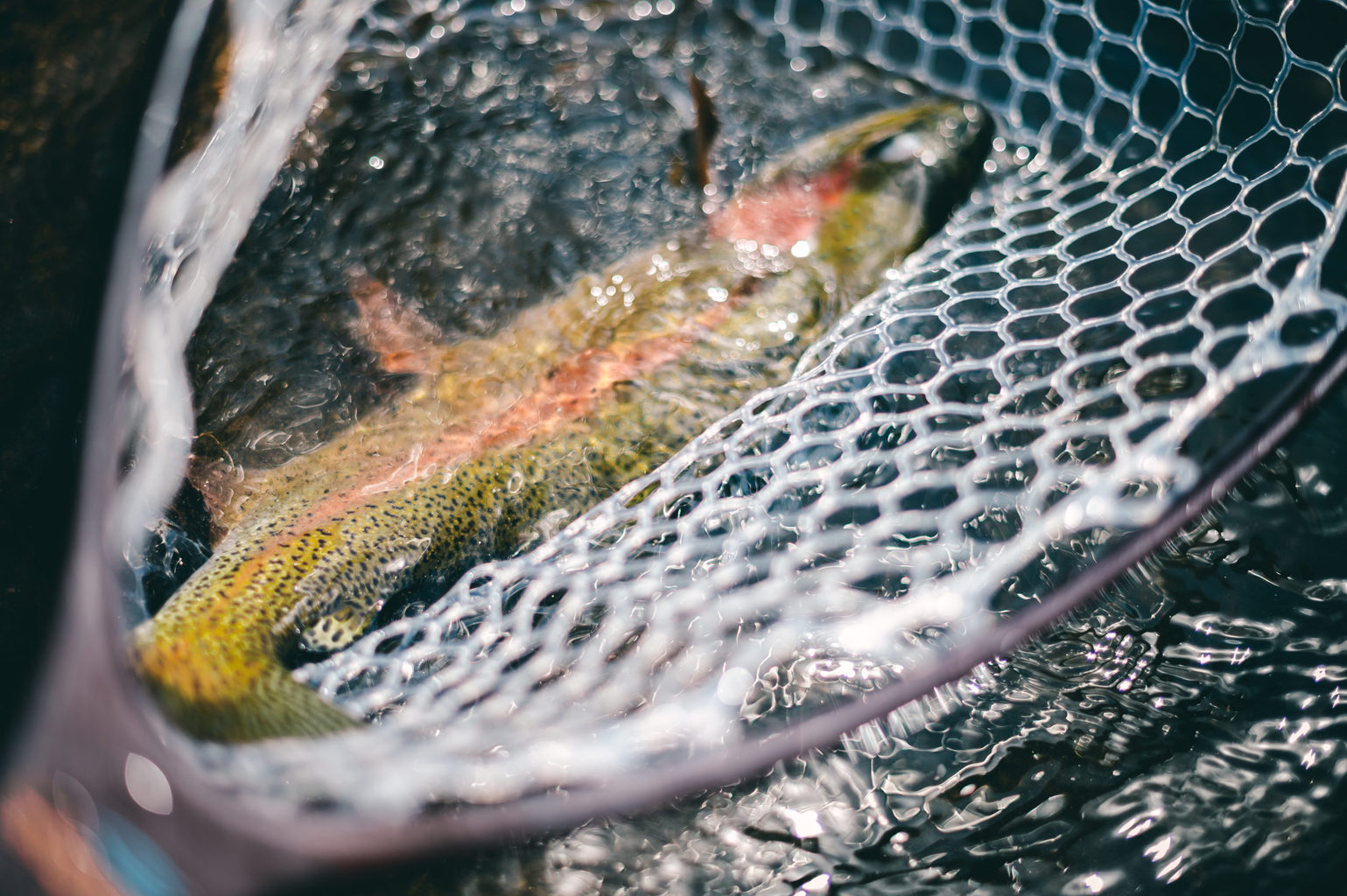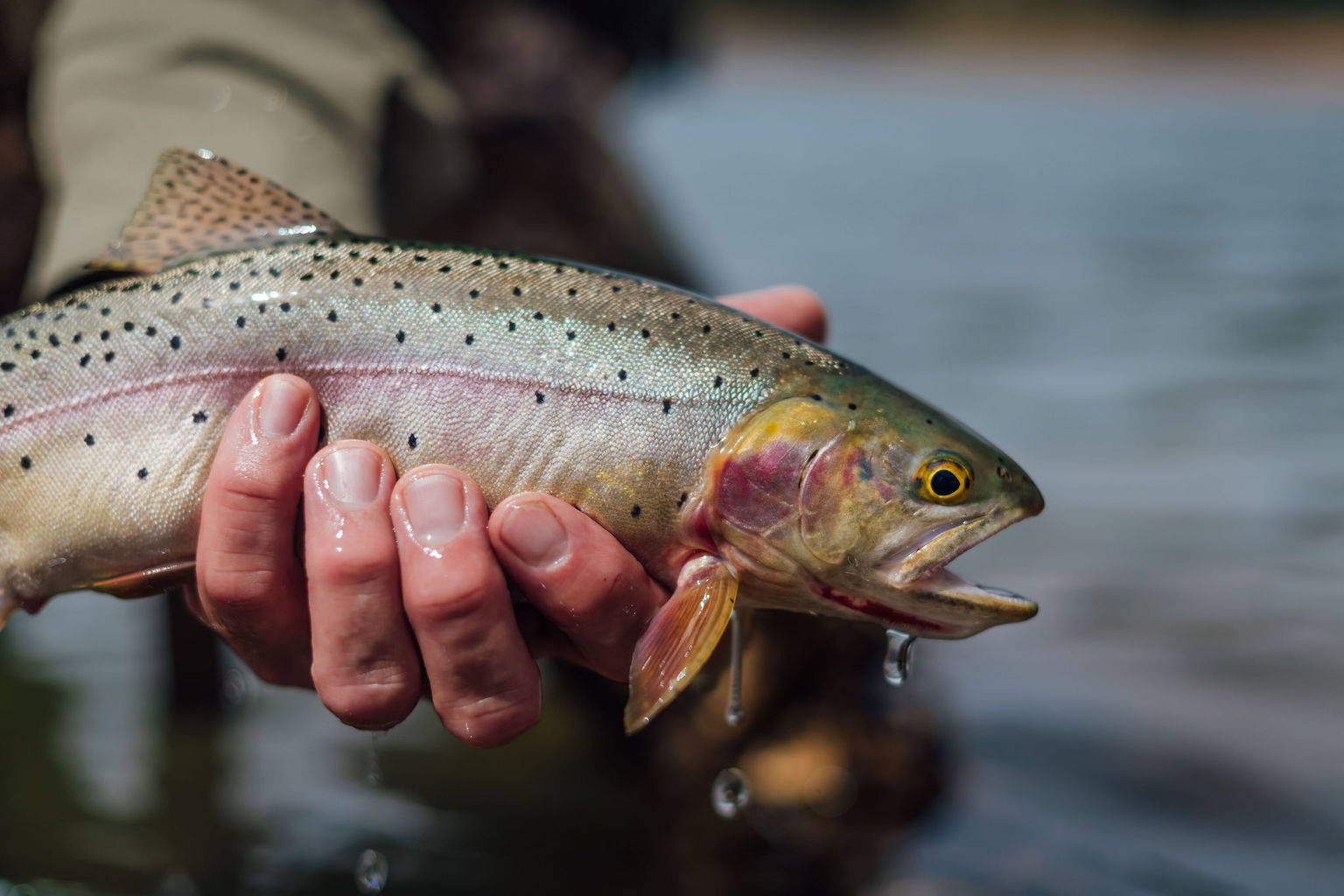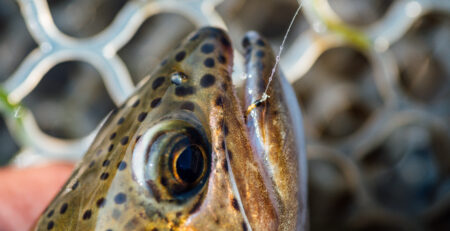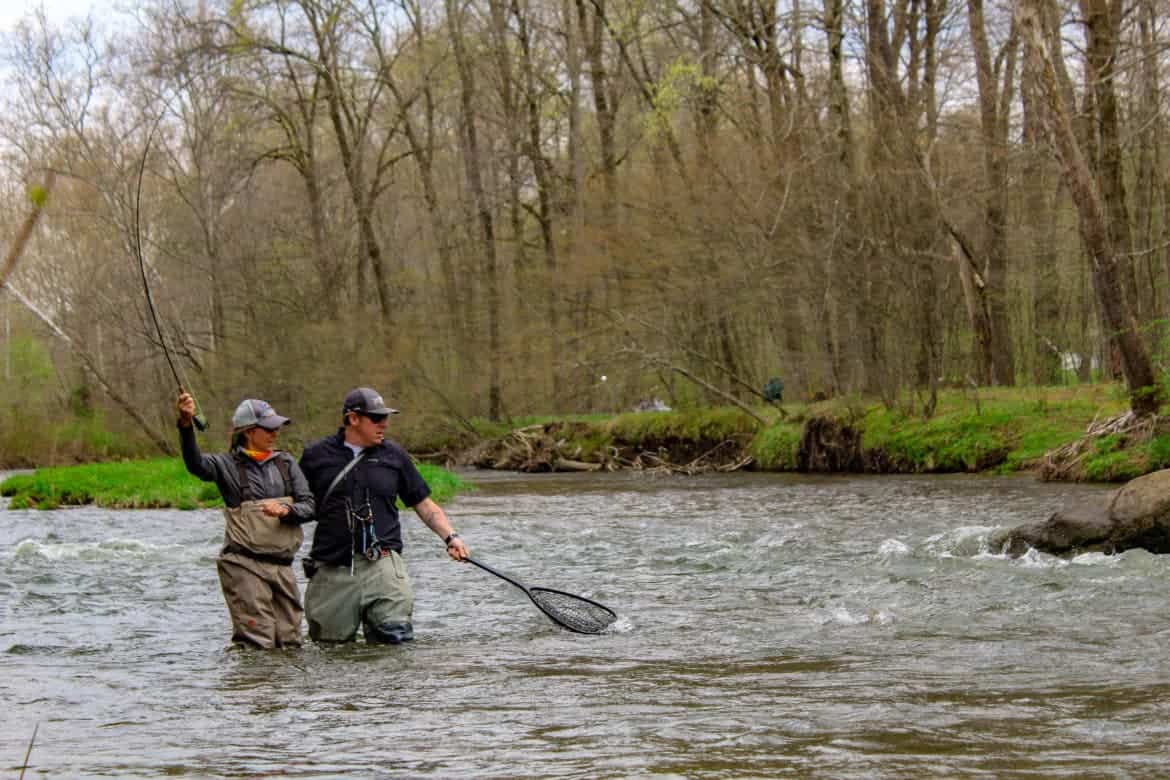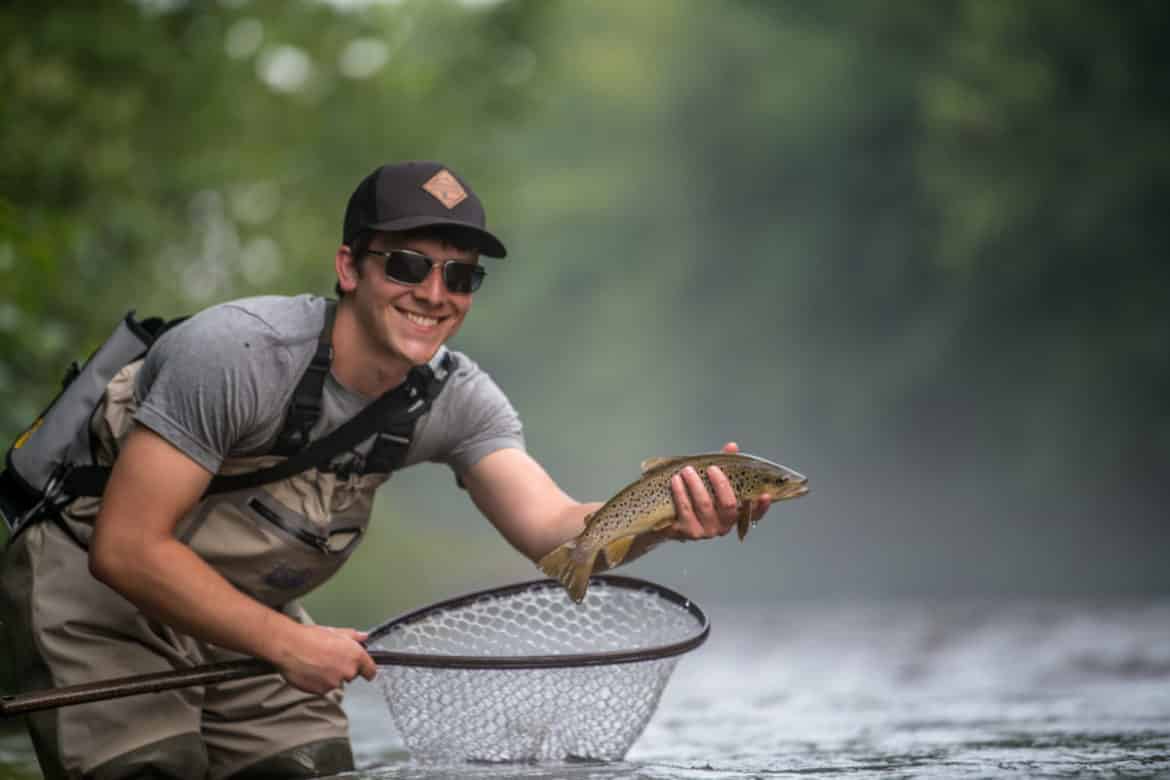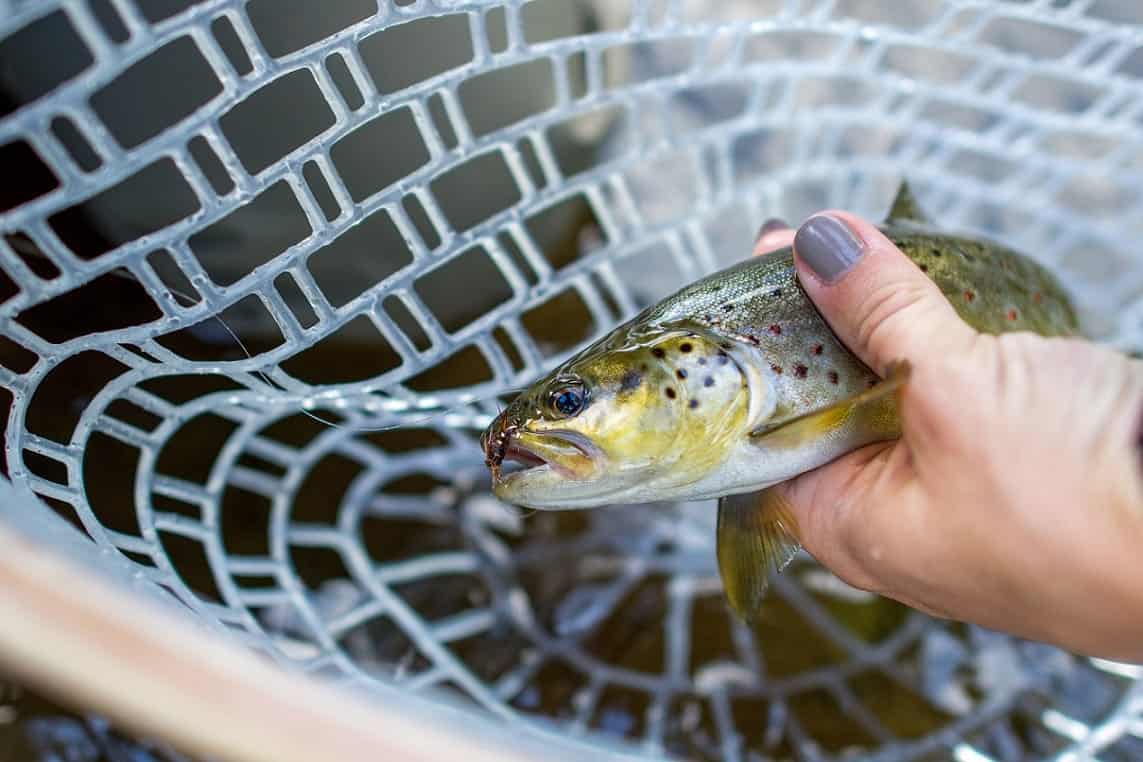7 Common Mistakes People Make Fly Fishing For Trout
Trout fishing can be a tough business! It’s why books have been written about it, guides focus on educating anglers, and fly shops make their money on helping make folks better fishers. Some of our mistakes are correctable, though! Here’s a list of seven common mistakes made by anglers and some help to correct them.
Just Cut It!
Tangle ups happen, and some days they happen often. It’s not your fault! The snarl of tippet, weights, flies, branches, and who knows what else happens to us all. Where anglers error is in the handling of said tangle. Don’t sit there and waste time gently threading wrapped tippet through tiny gaps in leader. Just cut the whole thing and re-tie! It’s almost always faster this way.
Keep Moving
Imagine, if you would: you’re fishing upstream and a particularly juicy spot comes into view. You continue casting as you inch closer and closer to the honey hole. Once there, it’s everything you dreamed of! For the first ten minutes fish come easy. A half hour later and the catching is a bit more sporadic, and an hour later the fish are all put down. Keep moving! Too often do we fall into the trap of catching fish at a great spot and anchoring down there for too long. Catch the fish that are there to be caught, and then go find some more.

Adjust
Flies, weights, indicator, tippet size, and sometimes even fishing locations need tinkered with on the fly. In the name of laziness anglers will fish flies too long or refuse to change their depth and weight, and to their own detriment. If something isn’t working, change it! If a stream is off that day, drive somewhere else! Otherwise angling efforts are tantamount to beating your head against the wall.

Discover New Flies Each Month
Premium flies, exclusive gear, and decades of fly fishing experience, delivered monthly.
Don’t Fall Into The Internet Trap
Ah yes, the Internet. Read any message board or Facebook group and you’ll get hundreds of conflicting opinions. Stream X is blown out, Stream Y doesn’t have any fish, Stream Z has drakes hatching all day every day! Trust your gut, and stick to your plan. Watch weather patterns and stream gauges to make decisions on when and where to fish. Don’t make the mistake of taking Internet information as gospel truth, because remember it’s hard to accurately report on fishing conditions from behind a keyboard!

Watch Where You Stand
Perhaps the most common mistake made by trout fishers is their position in the stream itself. Fish hold in all sorts of water, so standing in knee-high riffles to fish an opposite bank might seem like a good idea, but in reality, fish are being spooked. Fish everything that looks even somewhat promising before walking through it. You’ll be shocked at how many more fish you hook into.
Bring A Net
Before my guiding days I was often guilty of leaving the net at home except for steelhead trips. “Trout are hardly ever big enough to justify a net!” On the surface this is a true statement, but the truth is a net is a tremendous help when unhooking and handling fish. Having the fish rest safely in the rubber basket of a net while we get out cameras, phones, or unhook the fish is a great help to both us and the fish. Don’t make the mistake of leaving home without it!

Leave The Gills Alone!
Join any fly fishing-centric Facebook group and you’ll see plenty of fish pictures, both good and bad. It’s fun to marvel at other people’s catches and see some beautiful fish, but what sometimes isn’t so good is the handling of trout. A very common mistake made is in the way we handle a caught trout. Hands should always be wet before touching a fish and never under any circumstance should our fingers find their way into the fish’s gills.
—– BONUS —–
Be Aware Of Your Shadow
No matter what side or angle you approach the hole you’re looking to fish, be wary of where your shadow is cast. A passing shadow is an early warning sign to fish and will predictably cause alarm. Make an attempt to position yourself in a way where your profile is low and your shadow is cast away from any areas you are going to fish.
Mend Your Line
Indicators and dry flies are subject to an incredible amount of pushing and pulling from water currents. As a result, your rig is presented in an unnatural way and discourages strikes. In these cases, you’ll need to mend your line (which is nearly every cast).
Mending is, in its simplest form, the act of adjusting your fly so that it drifts through the water in a natural way. You make little adjustments to your line and fly that help it look more natural in the water. That means that your fly isn’t being pulled through the water by your fly line or skating across the water.
To do a basic mend, all you’re really doing is lifting up your rod (and your fly line) and moving the line against the current (upstream or downstream), in order to eliminate drag.
Location, Location, Location
In this context, location isn’t about finding a stream packed full of fish, while not a bad thing to consider. The location, the position, you choose to cast from is what we mean and it’s a strategic decision. Where you cast from impacts the currents you must mend against and fighting the brush over your shoulder. Wouldn’t it be simpler to reposition yourself so that the current works in your favor and the brush concern is neutralized?
In many cases, wading in a few feet can give you the perfect angle to use the current to expertly deliver your rig of flies right to the fish or, at least, minimize the need to constantly mend. Just take in the current and your surroundings to judge where you should stand for the easiest and best possible presentation.


